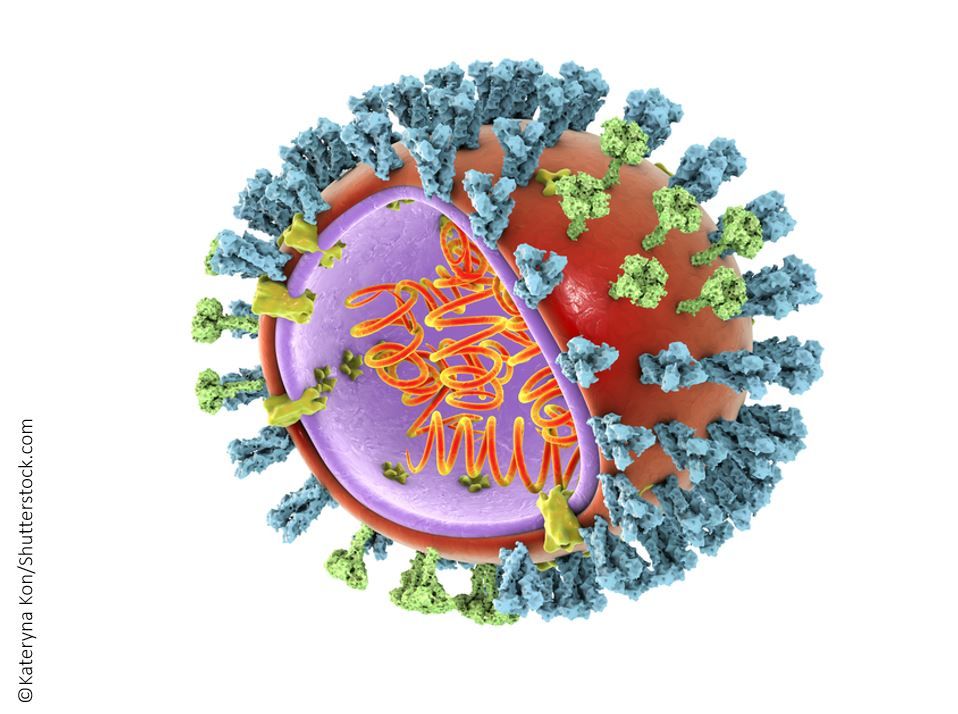Another “Bad” Flu Season: Do You Know Why?
Was it the flu vaccine? The virus itself? An unforeseen combination of both? You'll find out with these 5 questions.
©Kateryna Kon/Shutterstock.com

The US has seen plenty of “bad” flu seasons since the turn of the 21st century – only think back to the 2014-15 and 2013-14 seasons when death rates exceeded average baseline values. The pandemic year, 2009, had fewer deaths overall, but did have more deaths than average for individuals under age 64 years. But there seems to be consensus that 2017-18 is shaping up to take its place among the worst so far. So what is so particularly “bad” about this year-and why?
See if you can ferret out the reasons by answering these 5 questions.
Question 1.
Please click below for answer and next question.
The correct answer is D. B and C are both true
Most years both A and B strains circulate and some years more than one A strain causes significant disease. This is why if someone has a positive flu test early in the season, they still should be vaccinated against the flu if they haven't already been.
Question 2.
Please click below for answer and next question.
The correct answer is C. The correct strain of H3N2 was chosen for the vaccine but mutated during the production process.
Most flu vaccines are made with the selected viral strain reproducing in chicken egg embryos. This year, for reasons not completely understood, the H3N2 strain mutated during this process resulting in a vaccine not as well matched to the circulating strain which was correctly chosen to put in the vaccine. Two flu vaccines are not made using egg embryos. Flublok is made with an insect cell line engineered to produce the specific HA antigens as specified by the CDC every year. Flucelex is made in a cell culture of canine kidney cells.
Question 3.
Please click below for answer and next question.
The correct answer is B. False
The answer is probably false. We don't have data yet from this flu season, but a study done for the 2016-2017 season did not show a drop off in the influenza vaccination rate despite Flumist not being used in that season either.
Question 4.
Please click below for answer and next question.
The correct answer is B. Flumist has been recommended for use next season by the CDC since antibody response is comparable to response seen 3 years ago with the vaccine.
The poor replication in the nose of the previously used strain led to poor antibody response and decreased clinical efficacy. That strain has been replaced with a new one that has led to a robust antibody response which presumably will result in good protection.
Question 5
Please click below for answser.
The correct answer is D. Flublok and Flucelvax
Neither Flublok nor Flucelvax are made with the flu virus replicating in egg embryos, eliminating the chance for mutation during replication as happened with the others that do use eggs this year. I expect some studies will be done looking at the relative efficacy of these two vaccines as compared to the traditional ones that dominate the market.
Sources
NIH Scientist Expects Universal Flu Vaccine in 5 Years. March 30, 2018. MedpageToday Web site. https://www.medpagetoday.com/infectiousdisease/uritheflu/72096. Accessed May 2, 2018.
Did Nasal Flu Vaccine Withdrawal Lower Vaccination Rates? Drug Topics, October 11, 2017. http://drugtopics.modernmedicine.com/drug-topics/news/did-nasal-flu-vaccine-withdrawal-lower-vaccination-rates. Accessed May 4, 2018.
AstraZeneca announces renewed recommendation and availability of FLUMIST QUADRIVALENT vaccine in the US. [press release] February 21, 2018.
https://www.astrazeneca-us.com/media/press-releases/2018/astrazeneca-announces-renewed-recommendation-and-availability-of-flumist-quadrivalent-vaccine-in-the-us-02212018.html. Accessed May 2, 2018 .
Flublok Seasonal Influenza (Flu) Vaccine. CDC Web site. https://www.cdc.gov/flu/protect/vaccine/qa_flublok-vaccine.htm. Accessed May 3, 2108.
Prevention and Control of Seasonal Influenza with Vaccines, 2017-18. CDC Web site: https://www.cdc.gov/flu/professionals/acip/index.htm
Transcript for CDC Update on Widespread Flu Activity [media statement]. January 12, 2018. CDC Web site.
https://www.cdc.gov/media/releases/2018/t0112-widespread-flu-activity.html. Accessed May 7, 2018.